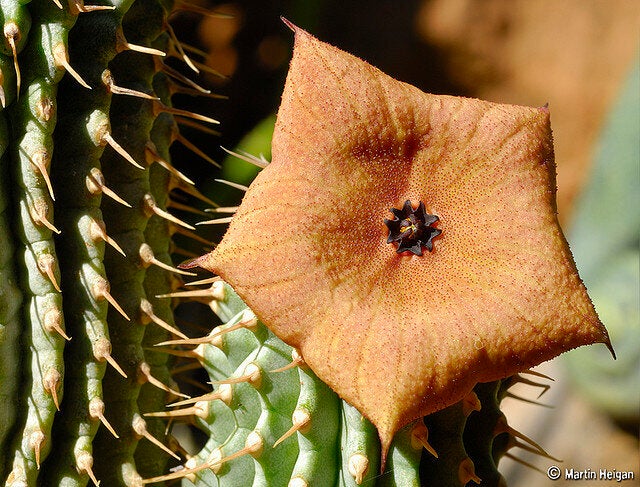It is a leafless plant that smells like rotten meat, but that was not why the South African Council for Scientific and Industrial Research (CSIR) was interested in it. The hoodia gordonnii had been used for centuries by the San people in Southern Africa to suppress appetite on long hunting trips. In 1996 the company patented the ingredient in hoodia responsible for suppressing appetite. However, following protests about ignoring the San people, CSIR cut a deal in 2002, entitling them to a percentage of the profits of products containing the ingredient.

Pharmaceutical companies are increasingly relying on traditional knowledge to help identify plants with medicinal properties, which they then research to create new products. Unfortunately, local communities do not always benefit. This is sometimes referred to biopiracy: the industrial practice of privatising and patenting products based on the traditional knowledge or genetic resources of indigenous people without authorisation or compensation.
It's about more than not sharing in the benefits. It can also make it more difficult for indigenous people to make use of the resources they have been using for generations. For example, the patent-holder of the Enola bean - a variety of Mexican yellow bean - sued many importers of Mexican yellow beans, even though their beans were a different variety and only their colour was similar, This led to export sales dropping by more than 90% and affecting 22,000 farmers. Although the patent was later revoked, much damage had been done.
This is the paradox of biopiracy. The development of new medicine and other products on the basis of existing genetic resources has the potential to benefit everyone, but in practice often leaves the local communities who alerted companies to the plants' usefulness worse off.
French Green MEP Catherine Grèze wants to do something about it. On 6 December the development committee will vote on her report on the development aspects of intellectual property rights on genetic resources: the impact on poverty reduction in developing countries. In the report, she looks at the problems and proposes solutions.
There is no doubt that traditional knowledge is vital. It does not always lead to useful new products - for example there is still no scientific proof that hoodia can suppress appetite - but by drawing on traditional knowledge, enterprises can significantly increase their chances of finding genetic resources with promising prospects. For example the rosy periwinkle was originally studied for tackling diabetes but is now used to treat cancer..
Current legislation does little to protect traditional knowledge. Companies can patent the composition and process that arise from the research and development inspired by traditional knowledge, but as traditional knowledge has been passed on for generations it can't be given protection in the form of a patent.
Ms Grèze wants additional legislative support for traditional knowledge. When applying for patents in Europe, firms should reveal the origin of any genetic resources and if traditional knowledge was used. They should also indicate if they have informed consent from the competent authorities and provide evidence of fair and equitable benefit sharing.
In the case of the San people, their share of the profits of the sales of drugs derived from hoodia is administered by a trust, which aims to use the money to support education , fund community projects and buy ancestral land that had been taken from them. It shows how an agreement can benefit the local community.
But ultimately, it should leave everyone better off. If indigenous people share in the benefits, they are more likely to come forward with their knowledge and more useful products can be developed.
Thank you to Martin Heigan for making his photo of a hoodia available under the Creative Commons licence
